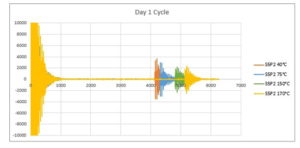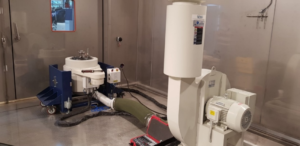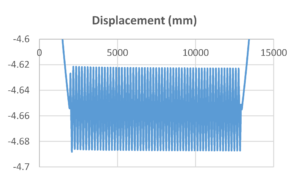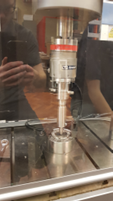
CASE STUDY | Lead-free piezoelectric sensors for aerospace applications
Extreme environment lead-free piezo-transducers for aerospace sensing applications
Key Deliverables
- A novel lead-free piezoceramic has been developed, which has been integrated in to sensor systems for use in aerospace, including flow, vibration, and proximity due to their high-temperature stability and increased sensitivity.
- Matching of thermal expansion, and development of bonding methods, has enabled extreme environment operation, with resilience to thermal and mechanical shock.
- Lead-free materials are key to the long-term technology strategy for aviation to meet sustainability, legislative and future-proofing supply chain goals.
- Ionix have proven lead-free materials which are able to excel in an aero-environment, offering longevity, sensitivity and stability over a wide range of operating conditions.
Overview
Product life cycles are extremely long in the aerospace market. It typically takes 10 to 15 years for a new concept to achieve commercial realisation on an engine. Any change to the supply chain poses a risk, as was observed with the removal of lead in solder, which required significant effort and expense in the 1990s and 2000s as engine manufacturers and their supply chains moved to lead-free alternatives.
Potential future changes in legislation restricting the use of lead (Pb) in piezoelectric ceramic materials, requires technical effort now, to avoid disruption to supply chains in the future, and when considering new products with a 20+ year lifecycle.
Ionix is already a key supplier of piezoelectric materials and sensors to global aviation, major process control and European industrial automation providers. They take advantage of Ionix’s unique synergy of high temperature, robustness and sensitivity. Ionix is now developing and supplying sensors in these markets, built with novel lead-free piezoelectric materials, to futureproof our clients businesses, including future aero-engine platforms.
The Challenge
- No commercially available high-temperature lead-free materials existed with an activity >50 pC/N, which limits the applicability of the materials for ultrasonic sensitivity. This is critical in fluid measurements, such as with kerosense, where attenuation and transmission losses are high.
- The environment can lead to challenges with any piezoelectric material – high and low temperatures (-75 to +200 °C), rapid thermal gradients, vibration, and shock are commonplace on turbine engines. A move away from kerosene to other fuels will broaden the temperature requirement, for example, liquid hydrogen and biofuels.
The Solution
- Ionix lead-based materials have been specifically tailored to work in extreme environments, and are used widely for liquid, gas, and steam flow measurement – the high-temperature capability, in conjunction with high sensitivity is paramount in this application.
- Ionix materials, and bonding solutions allow our materials to be joined and thermally expansion matched to a range of substrate and packaging materials, including titanium and titanium alloys – this allows mechanical vibration/acoustic energy to transfer efficiently between the piezo, the transducer/engine/fluid interface.
Execution
Ionix have proven lead-free materials that are able to excel in aero-environments, offering longevity, sensitivity, and stability across a wide range of operating conditions. These materials and sensors have undergone various aviation
specific test conditions, including high vibration and high temperature, under the NATEP framework, and have extended into engine trials. In vibration testing (Figure 1), Ionix sensors functioned normally, successfully launching and receiving ultrasound at accelerations up to 40g, across frequencies from 100 to 4,000 Hz.
Figure 1: Vibration testing of Ionix sensors. The sensors are able to operate normally
(launching and receiving ultrasound) at up to 40g acceleration, from 100 to 4,000 Hz.
During high temperature testing in Jet-A1 kerosene over a 24-hour period, with temperatures ranging from 40 to 170 °C, excellent signal-to-noise ratios were achieved (Figure 2).

Figure 2: Ultrasonic pitch-catch in Jet-A1 kerosene, at up to 170 °C. The shift in time base is a result of the change
in the speed of sound in Jet-A1 with temperature. Excellent signal-to-noise levels are achieved at all temperatures.
The Ionix high-temperature bond interface has also been tested at 300% maximum operating stresses, up to 6 kN at 2 Hz, ensuring the piezoelectric is permanently bonded to the titanium sensor face (Figure 3).
Figure 3: Dynamic stress testing of sensor from 600-6000 N, at 2 Hz.



